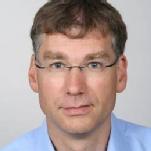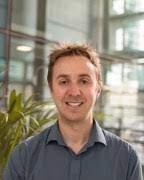Abstracts
 |
Shaping active matter through topological defects Living organisms are built from active matter that can produce mechanical stress from chemical energy. Such ‘active stress' can modify cell shapes and drive morphogenetic events during organismal development. How active matter is organized to reliably produce these processes is still largely unknown. On a molecular level, the active stress results from the action of molecular motors that move along filamentous polymers. On a coarse grained level, the orientation of filaments is captured by an orientational order field. In active matter, this field typically exhibits defects, that is, points, where the orientational order is not well-defined. In this presentation, I will discuss the dynamics of topological defects and how they can organize stresses in and thereby shape changes of active matter. |
|
|
Quantum and classical atomistic modelling in biology and medicine Daniel Cole (School of Natural & Environmental Sciences, Newcastle University) Large-scale computational simulation of atomistic structure, dynamics and interactions is invaluable in the understanding of structure/function relationships in biology and the rational design of new medicines. However, finding the right balance between computational expense and accuracy is challenging in these complex, heterogeneous systems. Drawing on methods that include linear-scaling density functional theory, bespoke force field design and machine learning, I give an overview of some of our efforts to elucidate possible functional roles of quantum effects in biology and model long time scale behaviour of organic molecules for structure-based drug design. |

